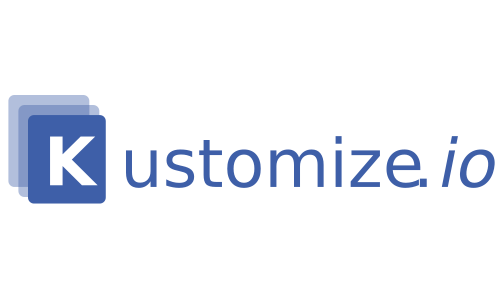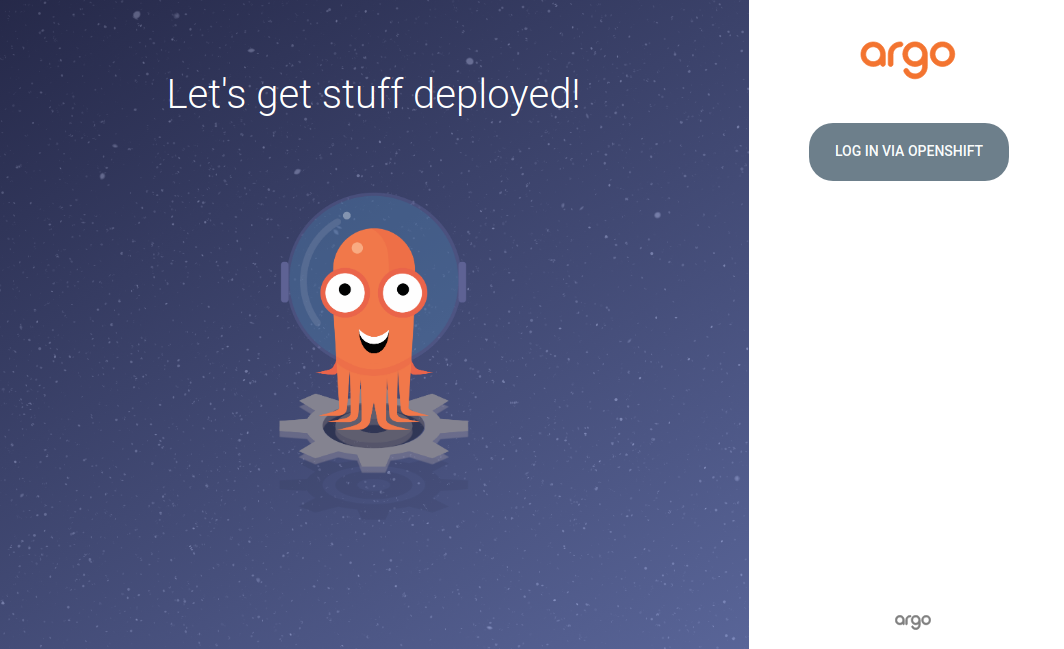Kustomize
Kustomize traverses a Kubernetes manifest to add,
remove or update configuration options without forking. It is available both as
a standalone binary and as a native feature of both oc and kubectl.
Exploring Kustomize
The principles of kustomize are:
-
Purely declarative approach to configuration customization
-
Manage an arbitrary number of distinctly customized Kubernetes configurations
-
Every artifact that kustomize uses is plain YAML and can be validated and processed as such
-
As a "templateless" templating system; it encourages using YAML without forking the repo it.

Exploring the Kustomize CLI
The kustomize CLI should have been installed as part of the lab
setup. Verify that it has been installed.
kustomize versionThis should display the version, it should look something like this.
v5.1.0Kustomize, at its core, is meant to build on top of native Kubernetes manifests
based on YAML while leaving the original YAML intact. It achieves this in a
"template-less" templating format. This is done by providing a
kustomization.yaml file.
We will be focusing on two Kustomize sub-commands: the build command and the
edit command.
Kustomize build
The build command takes the YAML source (via a path or URL) and creates a new
YAML that can be piped into oc create. We will work with an example in the
content/modules/ROOT/examples/kustomize-build directory within the
repository you cloned.
cd ~/openshift-gitops-workshop/content/modules/ROOT/examples/kustomize-buildHere you should see two files, a welcome.yaml file and a kustomization.yaml file, let’s have a look at them.
cat ./welcome.yamlapiVersion: apps/v1
kind: Deployment
metadata:
labels:
app: welcome-php
name: welcome-php
spec:
replicas: 1
selector:
matchLabels:
app: welcome-php
strategy: {}
template:
metadata:
labels:
app: welcome-php
spec:
containers:
- image: quay.io/redhatworkshops/welcome-php:latest
name: welcome-php
resources: {}
securityContext:
allowPrivilegeEscalation: false
capabilities:
drop:
- ALL
securityContext:
runAsNonRoot: true
seccompProfile:
type: RuntimeDefaultThis file shows nothing special. Just a standard Kubernetes Deployment manifest.
Now what if, for example, we wanted to add a label to this manifest without
editing it? This is where the kustomization.yaml file comes in.
cat ./kustomization.yamlapiVersion: kustomize.config.k8s.io/v1beta1
kind: Kustomization
resources:
- ./welcome.yaml
patches:
- patch: |-
- op: add
path: /metadata/labels/testkey
value: testvalue
target:
group: apps
kind: Deployment
name: welcome-php
version: v1As you can see in the output, we only need a resources and a patches section to accomplish this:
-
The
resourcesis an array of individual files, directories, and/or URLs where other manifests are stored. In this example we are just loading in one file. -
The
patchesis where we add our label to this manifest.
|
You can read about what options are available for patching in the official documentation site |
Build this manifest by running:
kustomize buildYou can see that the new label got added to the manifest!
apiVersion: apps/v1
kind: Deployment
metadata:
labels:
app: welcome-php
testkey: testvalue # Our new label
name: welcome-php
spec:
replicas: 1
selector:
matchLabels:
app: welcome-php
strategy: {}
template:
metadata:
labels:
app: welcome-php
spec:
containers:
- image: quay.io/redhatworkshops/welcome-php:latest
name: welcome-php
resources: {}
securityContext:
allowPrivilegeEscalation: false
capabilities:
drop:
- ALL
securityContext:
runAsNonRoot: true
seccompProfile:
type: RuntimeDefaultKustomize edit
You can use the kustomize edit command to make manifest changes instead of manually writing YAML. For
example, you can change the image tag the Deployment above uses from latest
to ffcd15 by running the following:
kustomize edit set image quay.io/redhatworkshops/welcome-php:ffcd15This will update the kustomization.yaml file with an images section.
cat kustomization.yamlapiVersion: kustomize.config.k8s.io/v1beta1
kind: Kustomization
resources:
- ./welcome.yaml
patches:
- patch: |-
- op: add
path: /metadata/labels/testkey
value: testvalue
target:
group: apps
kind: Deployment
name: welcome-php
version: v1
images:
- name: quay.io/redhatworkshops/welcome-php
newTag: ffcd15Now when you run:
kustomize build .You should see not only the new label, but also the new ffcd15 image tag!
apiVersion: apps/v1
kind: Deployment
metadata:
labels:
app: welcome-php
testkey: testvalue
name: welcome-php
spec:
replicas: 1
selector:
matchLabels:
app: welcome-php
strategy: {}
template:
metadata:
labels:
app: welcome-php
spec:
containers:
- image: quay.io/redhatworkshops/welcome-php:ffcd15
name: welcome-php
resources: {}
securityContext:
allowPrivilegeEscalation: false
capabilities:
drop:
- ALL
securityContext:
runAsNonRoot: true
seccompProfile:
type: RuntimeDefaultYou can now see how you can take existing YAML and modify it for your specific environment without the need to copy or edit the original.
|
Kustomize can also be used to write a new YAML file and pipe it into
the |
Exploring Kustomize with oc
The OpenShift CLI (oc) has support for Kustomize built in.
It inherits this from kubectl which has had this same support since Kubernetes 1.14.
You can see this by running:
oc kustomize --helpYou can run the kustomize build command by doing:
oc kustomize
Although you can use oc kustomize and pipe it into the oc apply command, you
don’t have to. The oc apply command has the -k option that
will run the build before it applies the manifest.
|
|
Now you will apply your kustomize-d Deployment manifest into one of your projects:
|
Ensure that you are in the |
oc apply -n USER_PLACEHOLDER-bgdk -k .You should see the following letting you know the deployment was successful
deployment.apps/welcome-php created|
You can pass not only directories, but URLs as well.
The only requirement is that you have a |
Now that the deployment is created, you should see the pods running in the namespace with
oc get pods -n USER_PLACEHOLDER-bgdkThe console should return something along the lines of
NAME READY STATUS RESTARTS AGE
welcome-php-9474fc448-sthzr 1/1 Running 0 34sYou can also see the deployment was created with the additional labels
oc get deployment welcome-php -o jsonpath='{.metadata.labels}{"\n"}' -n USER_PLACEHOLDER-bgdkResulting in
{"app": "welcome-php","testkey": "testvalue"}Finally, check that the image was updated based on the customization we made
oc get deploy welcome-php -n USER_PLACEHOLDER-bgdk -o jsonpath='{.spec.template.spec.containers[].image}{"\n"}'The output should return
quay.io/redhatworkshops/welcome-php:ffcd15As you can see kustomize can be a powerful tool.
You can delete the applied resources with oc delete and kustomize, too
oc delete -n USER_PLACEHOLDER-bgdk -k .Once you run this command, check that you see the following to confirm deletion
deployment.apps "welcome-php" deletedDeploying Kustomized Application
In Chapter 2 - GitOps Basics, you learned that in a GitOps workflow the entire application stack (including infrastructure) is reflected in a Git repo. The challenge is how to do this without duplicating YAML.
So now that you’ve explored kustomize, let’s see how it fits into Argo
CD and how it can be used in a GitOps workflow.
Before proceeding, move back into the examples home directory:
cd ~/openshift-gitops-workshop/content/modules/ROOT/examplesKustomized Application
Argo CD has native support for Kustomize. You can use this to avoid duplicating YAML for each deployment. This is especially helpful if you have different environments or clusters you’re deploying to.
Take a look at this Application definition:
cat ./bgdk-app.yamlapiVersion: argoproj.io/v1alpha1
kind: Application
metadata:
name: bgdk-app
spec:
destination:
namespace: $USER-bgdk
server: https://kubernetes.default.svc
project: default
source:
path: content/modules/ROOT/examples/bgdk
repoURL: https://github.com/openshiftdemos/openshift-gitops-workshop
targetRevision: main
syncPolicy:
automated:
prune: true
selfHeal: falseAs you will see below, this Application definition refers to the same base resources you used in
Chapter 2. It references a directory path (content/modules/ROOT/examples/bgdk)
which contains a new kustomization.yaml file specific to this application. This concept is called an overlay.
Where a base set of manifests are overlay-d with your customizations.
Click here to learn more about Kustomize bases and overlays,
Now take a look at this Kustomization definition:
cat ./kustomization.yamlapiVersion: kustomize.config.k8s.io/v1beta1
kind: Kustomization
resources:
- ../bgd-base
patches:
- patch: |-
- op: replace
path: /spec/template/spec/containers/0/env/0/value
value: yellow
target:
group: apps
kind: Deployment
name: bgd
version: v1This kustomization.yaml takes the base application located at content/modules/ROOT/examples/bgd-base
and patches the Deployment manifest so that you get yellow dots instead of blue ones.
Now deploy this application:
sed 's/$USER/USER_PLACEHOLDER/' ~/openshift-gitops-workshop/content/modules/ROOT/examples/bgdk-app.yaml | oc apply -n USER_PLACEHOLDER-argocd -f -The Argo CD Web Console
Switch back to the Argo CD Web UI, you may be presented with the Argo CD login screen again.

You can login using your the same credential you used for OpenShift which were provided by the workshop administrator.
This should now show you two apps on the Argo CD UI.

Open the Route for this application. It’s in the USER_PLACEHOLDER-bgdk Project.
Remember you can get this from the topology view, or from the CLI:
oc get route -n USER_PLACEHOLDER-bgdk bgd -o jsonpath='{"http://"}{.spec.host}{"\n"}'You should see yellow balls flying around. This is the same application you used previously, and so you know that by changing the environment variable on the deployment you can change the ball color.
Argo CD deployed the application with your kustomize-ations! To review what we
just did:
-
Deployed an Application called
bgdwith a blue square. -
Deployed another Application based on
bgdcalledbgdk -
The Application
bgdkwas deployed in its own namespace, with deployment customizations. -
ALL without having to duplicate YAML!